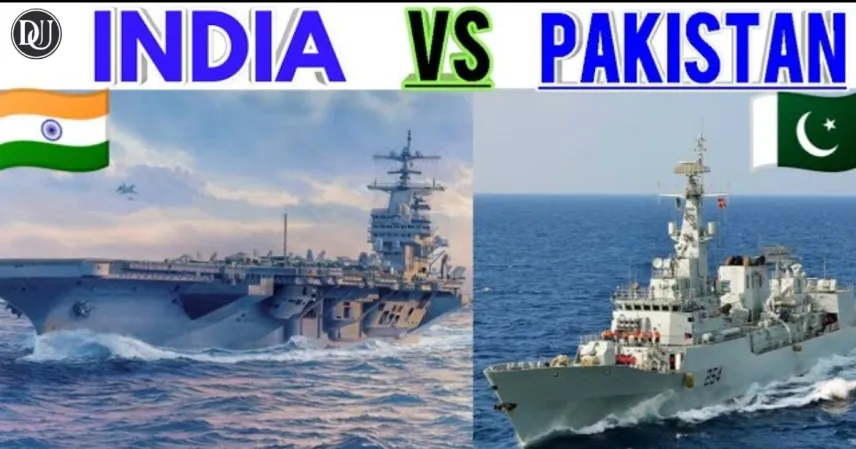Vice Admiral A.N. Pramod’s recent remarks have brought renewed attention to the longstanding military competition between India and Pakistan, particularly focusing on the Pakistan Navy vs Indian Navy dynamics. In his address, he emphasized that the Indian Navy’s overwhelming superiority significantly influenced Pakistan’s urgent request for a ceasefire, revealing the impact naval power can have on broader strategic and diplomatic outcomes.
The Pakistan Navy vs Indian Navy rivalry is deeply rooted in the history of both nations. From the wars fought in 1965 and 1971 to the more recent border tensions, maritime strength has been a crucial factor in determining dominance and leverage. Over the years, India has invested heavily in modernizing its naval forces, deploying aircraft carriers, nuclear submarines, and state-of-the-art warships that have given it a distinct edge in the region.
![]()
The Indian Navy today operates as a blue-water force capable of projecting power far beyond its borders, making it a critical component of India's national security and foreign policy. In the Pakistan Navy vs Indian Navy context, this capability represents not just defense preparedness but strategic depth. It allows India to deter aggression and maintain control over vital sea lanes that are essential for regional and global trade.
On the other hand, the Pakistan Navy, while having made improvements, continues to face limitations in terms of technology, funding, and global partnerships. In the Pakistan Navy vs Indian Navy comparison, Pakistan's fleet remains smaller and less advanced, relying more on conventional deterrents and support from strategic partners. However, Pakistan has been actively working to bridge the gap by acquiring new submarines, upgrading its frigates, and forming naval partnerships, particularly with countries like China and Turkey.
The gap in capabilities, however, remains evident. The Pakistan Navy vs Indian Navy balance continues to be heavily skewed in favor of India, especially in areas like air-sea integration, nuclear deterrence at sea, and carrier battle group operations. These factors create a sense of urgency for Pakistan, especially during escalations, as seen in their recent calls for de-escalation amidst Indian naval readiness.
![]()
This naval rivalry also plays a significant role in regional stability. The Pakistan Navy vs Indian Navy dynamics influence the strategic calculations of other regional players, including China and the United States. As maritime trade through the Indian Ocean increases, the power to secure sea routes has become vital. India’s ability to do so more effectively makes the Indian Navy a preferred partner for many countries in the Indo-Pacific region.
The Pakistan Navy vs Indian Navy contest is not just about military strength but also about soft power, regional influence, and economic control. India's growing collaborations in the Indo-Pacific region further widen the strategic gap. These partnerships are bolstered by the Indian Navy’s consistent participation in joint exercises, maritime dialogues, and humanitarian operations.
In conclusion, the Pakistan Navy vs Indian Navy rivalry remains a defining element of South Asia’s security landscape. With India holding a clear edge in technology, scale, and strategic outreach, its navy continues to play a central role in maintaining regional dominance. As both nations continue to modernize their fleets, the naval balance will be a key factor in future peace, conflict, and diplomacy in the Indian Ocean and beyond.










